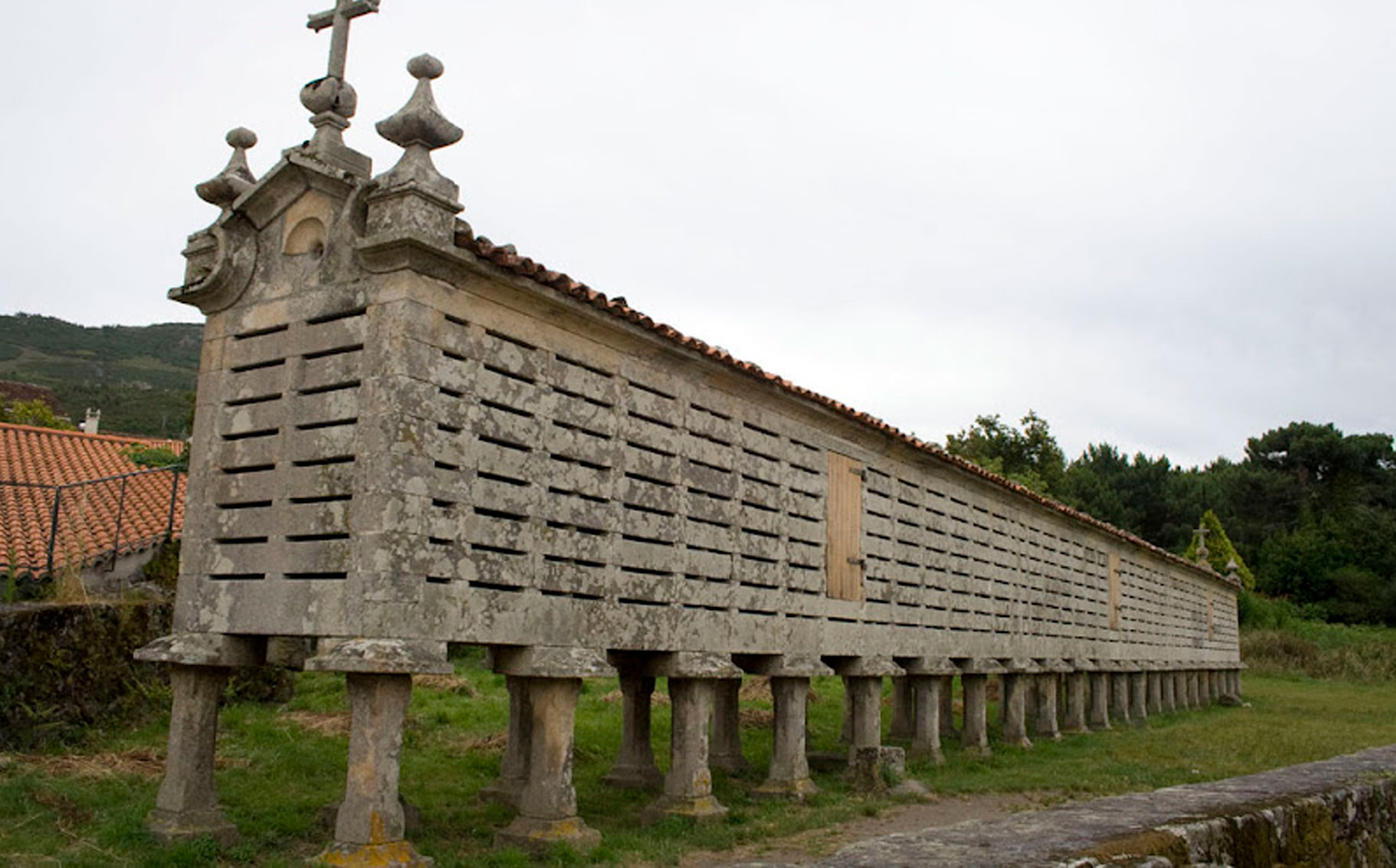THE HÓRREOS

THE HÓRREOS In the region of Galicia, a land of green landscapes and rich culture, the granaries stand as silent witnesses of history and tradition. These elevated structures, designed to store and protect crops from humidity and rodents, are true architectural gems that have endured over the centuries. Below, we present the five most famous and important Galician granaries, each with its own history and unique charm. Hórreo de Carnota: Located in the municipality of Carnota, this hórreo holds the title of the largest in Galicia and one of the largest in the entire Iberian Peninsula. Its imposing 34-meter-long structure dates back to the 18th century and stands on granite pillars. The spaciousness of its interior space allowed it to store large quantities of grain, establishing itself as a symbol of the agricultural prosperity of the region. Hórreo de Combarro: In the picturesque fishing town of Combarro, is this hórreo, considered one of the most photographed in Galicia. Its uniqueness lies in the fusion of architectural styles, combining Romanesque and Baroque elements. Built on the Ría de Pontevedra, it offers an impressive view of the sea and the port, becoming an unparalleled tourist attraction. Hórreo de Lira: Located in the municipality of Carnota, the Hórreo de Lira stands out for its elegant structure of wood and stone. Dating from the 19th century, it is characterized by its careful design and ornamental details, which reflect the craftsmanship of the time. This hórreo is a testament to the Galician meticulousness in the construction of these iconic agricultural buildings. Hórreo de San Sadurniño: In the parish of Nebra, there is the hórreo of San Sadurniño, considered one of the oldest in Galicia. Its wood and stone structure, which dates back to the 15th century, shows the influence of pre-Romanesque architecture. Despite the ravages of time, this granary has been restored to preserve its historical and cultural value. Hórreo de Rianxo: Located in the coastal town of Rianxo, this hórreo stands out for its strategic location in the port. Built on granite pillars, it offers a panoramic view of the sea and the fishing boats that characterize the life of the community. Its proximity to water makes it a symbol of the intrinsic relationship between land and sea in Galician identity. These five Galician granaries not only bear witness to the region’s agricultural past, but also represent the deep connection between the architecture, history and identity of Galicia, attracting visitors from all over the world who seek to immerse themselves in the cultural richness of this charming community.
THE VISITABLE GALICIAN ISLANDS

THE VISITABLE GALICIAN ISLANDS A tour of the Atlantic paradise of Galicia should take any traveler to discover the visitable Galician islands. These wonderful surprises dot the coast with their unique charm and stunning landscapes. From the Cíes archipelago to the remote islands of Ons, it is a pleasure to discover a treasure of experiences that captivate the senses and elevate the adventurous spirit. Cíes Islands: An Eden on Earth The trip begins in the Cíes Islands, declared a Maritime-Terrestrial National Park. This archipelago, made up of Monteagudo, Do Faro and San Martiño, is proud of its white sand beaches and crystal clear waters. Visitors can explore trails that wind through pine forests and enjoy panoramic views from the Cíes Lighthouse. Additionally, water activities such as scuba diving and kayaking offer a unique glimpse of the marine life that thrives off its shores. Ons Islands: Wild Nature and Seafaring Tradition The journey continues towards the Ons Islands, an enclave where virgin nature and cultural authenticity intertwine. Its rugged cliffs and hidden beaches attract photography lovers and hikers alike. In the picturesque villages of Ons and O Curro, locals share stories of seafaring traditions, while visitors can sample exquisite fresh seafood at local restaurants. Arousa Island: Connection between Sea and Land Arousa Island stands out as a meeting point between marine life and human activity. Its sun-drenched beaches are ideal for relaxing, but the highlight is the rich heritage of fishing and aquaculture. Visitors can embark on boat excursions to observe the punts (mussel farming platforms) and learn about marine sustainability at the Museo da Conserva. San Simón Island: History and Natural Refuge The journey continues with the mysterious San Simón Island, where the ruins of an ancient monastery and a ship cemetery tell the story of its past. This protected site served as a refuge during the Spanish Civil War and is now a space of peace and contemplation. Seabirds find their home here, making it a paradise for bird watchers. In short, the islands of Galicia offer a diverse palette of experiences, from the serenity of the beaches to the cultural richness and history embedded in every corner. This Atlantic corner of Spain is revealed as an essential destination for those seeking authentic adventures and a deep connection with nature. Would you like to visit Galicia? Check out our tours.
